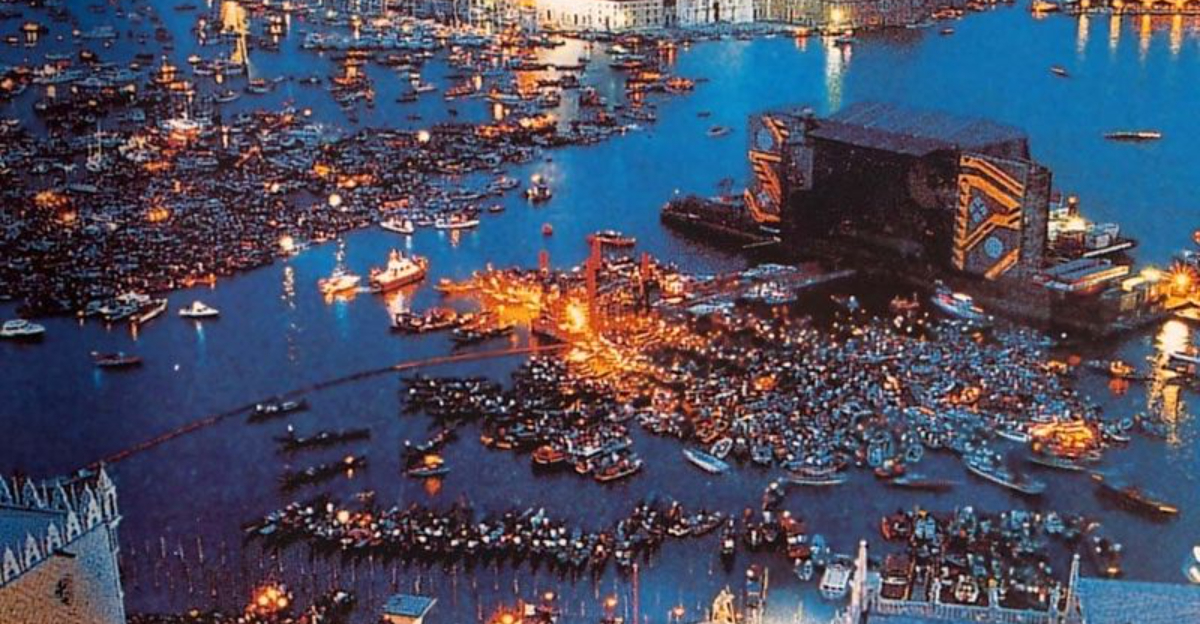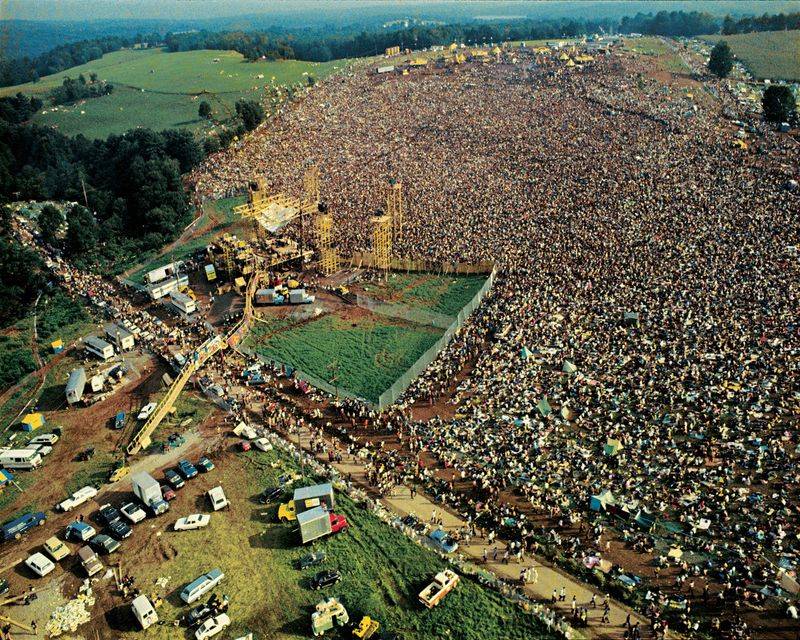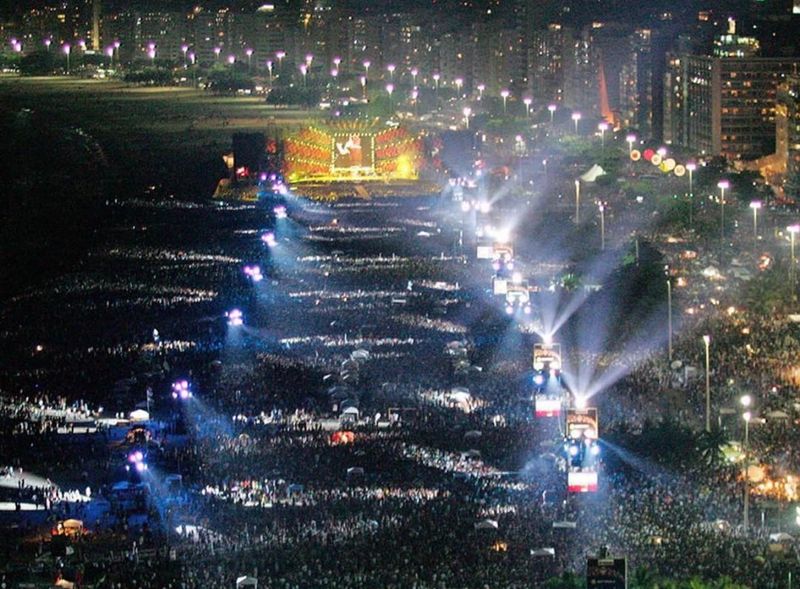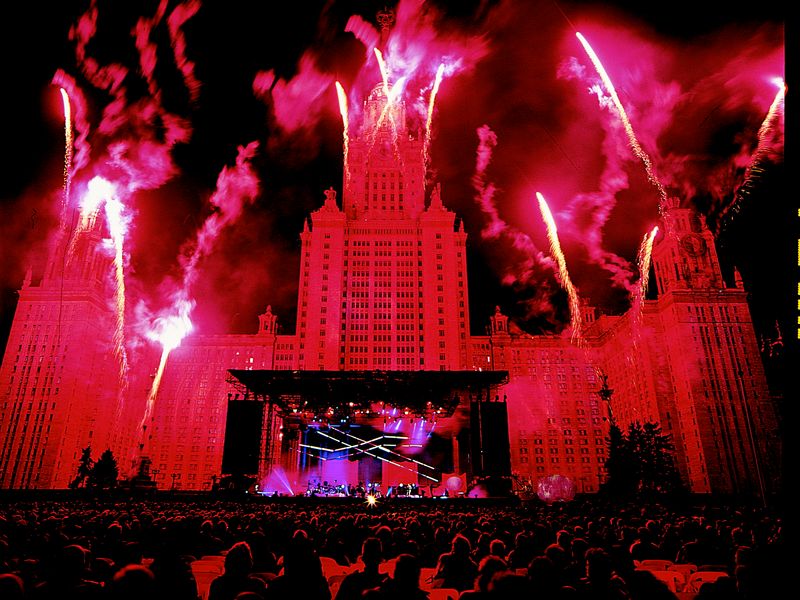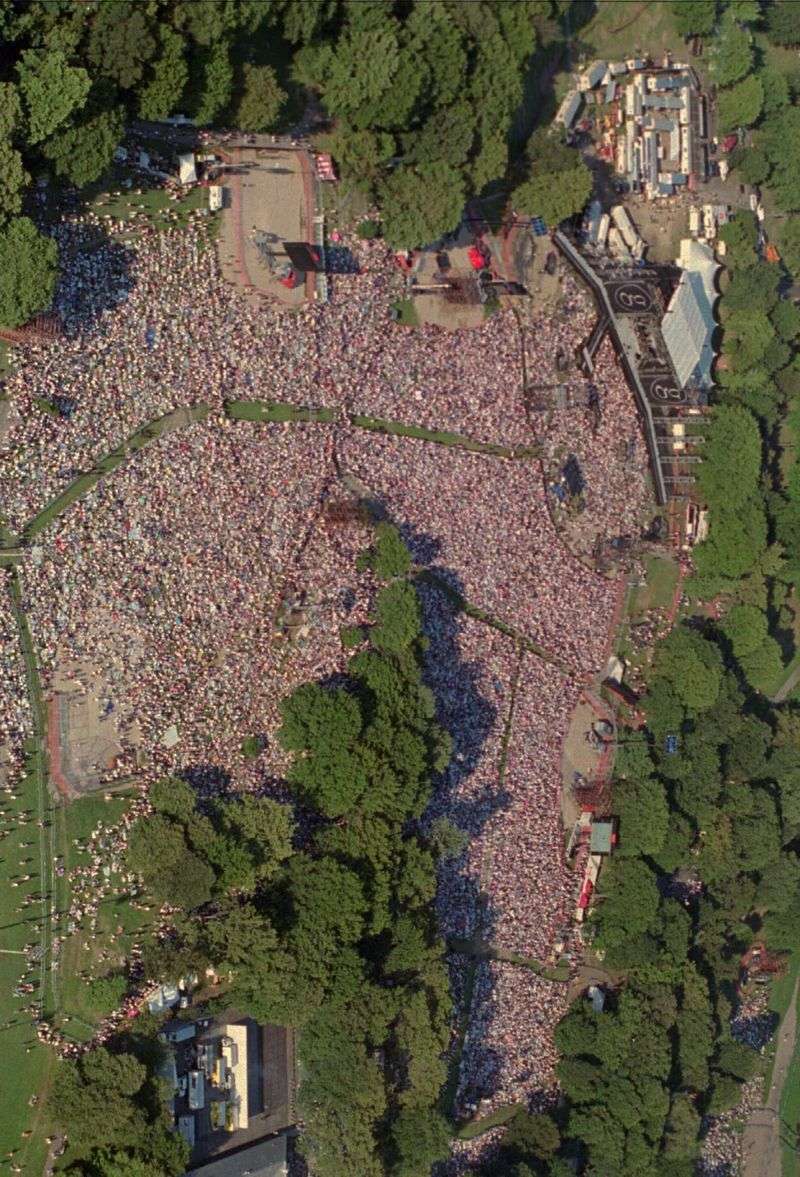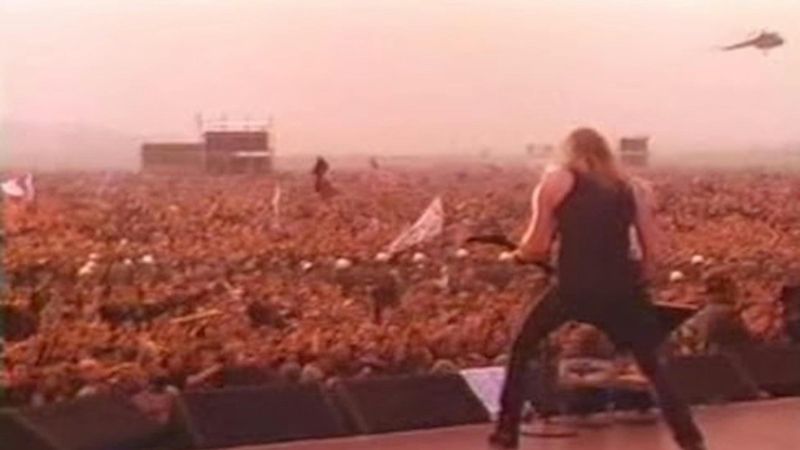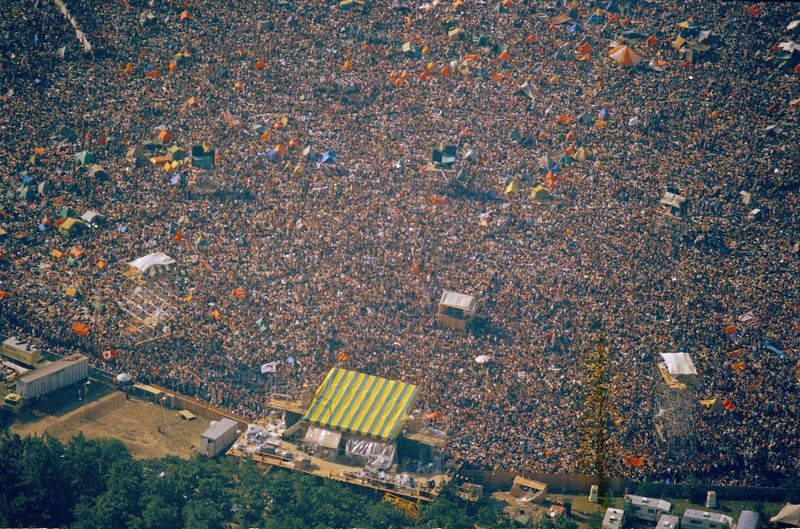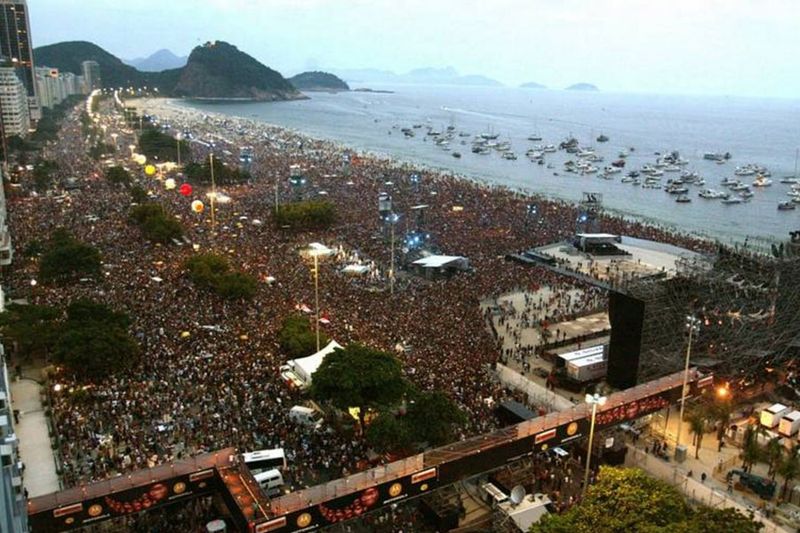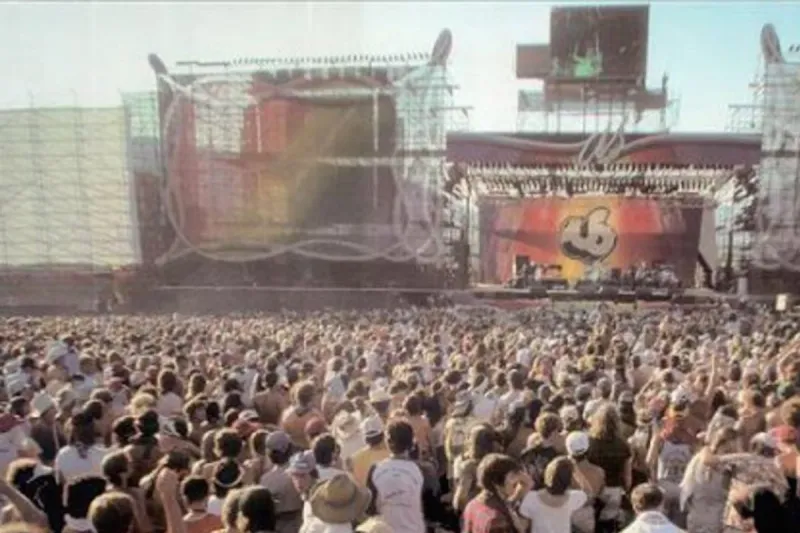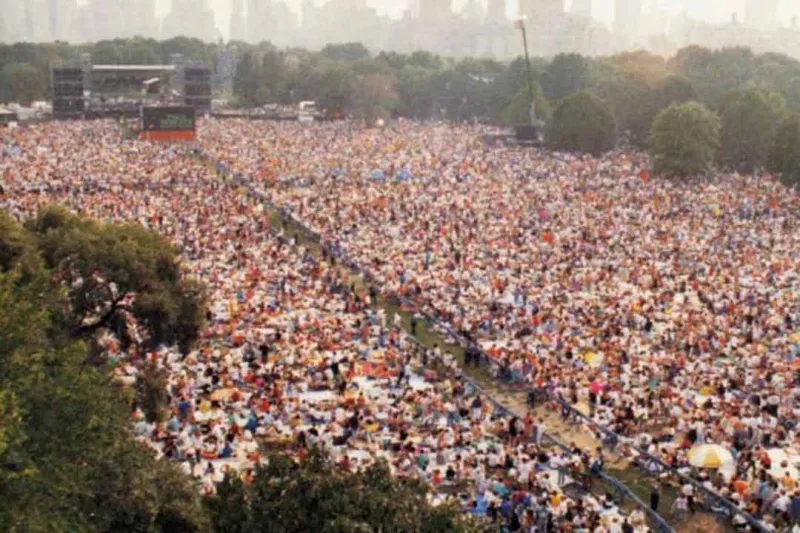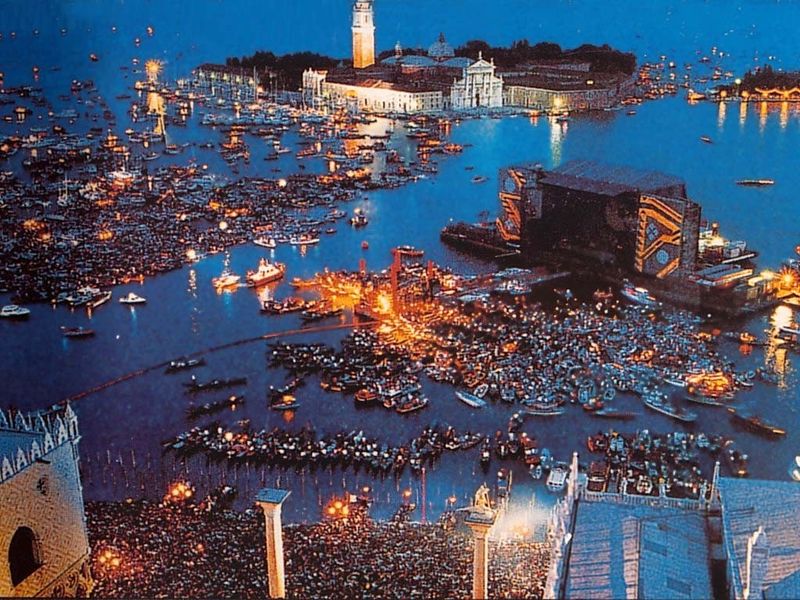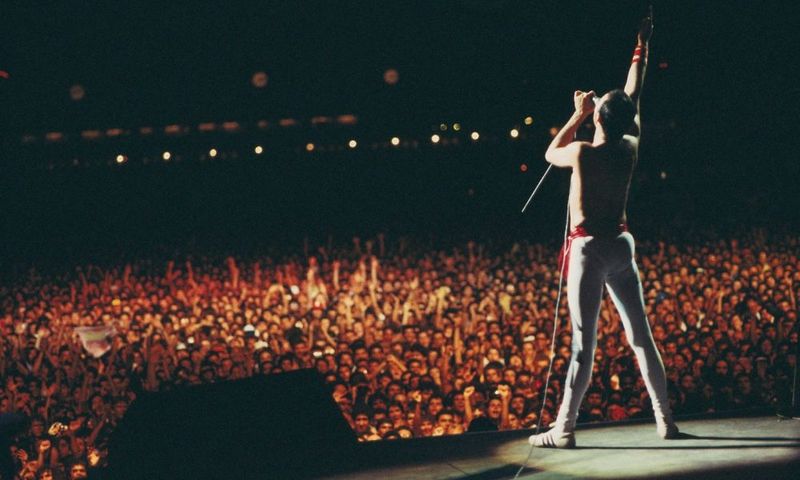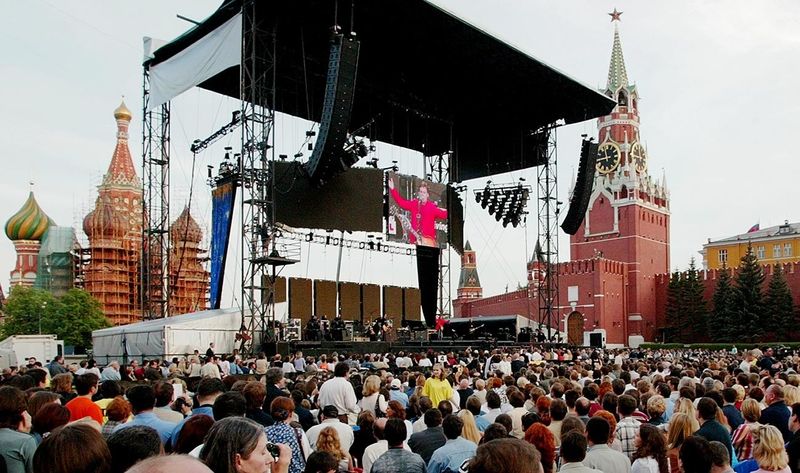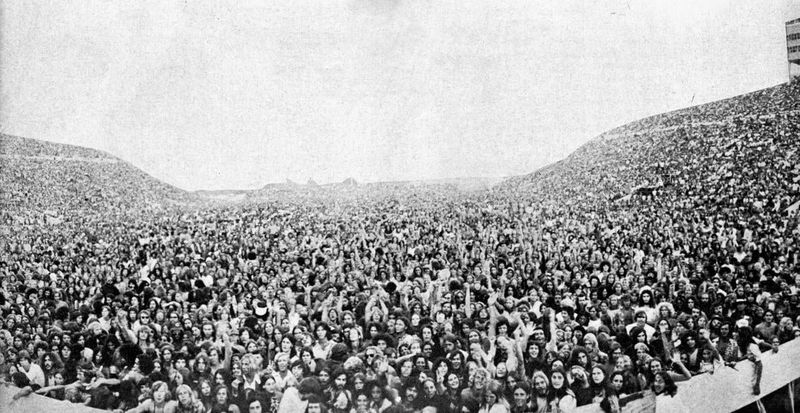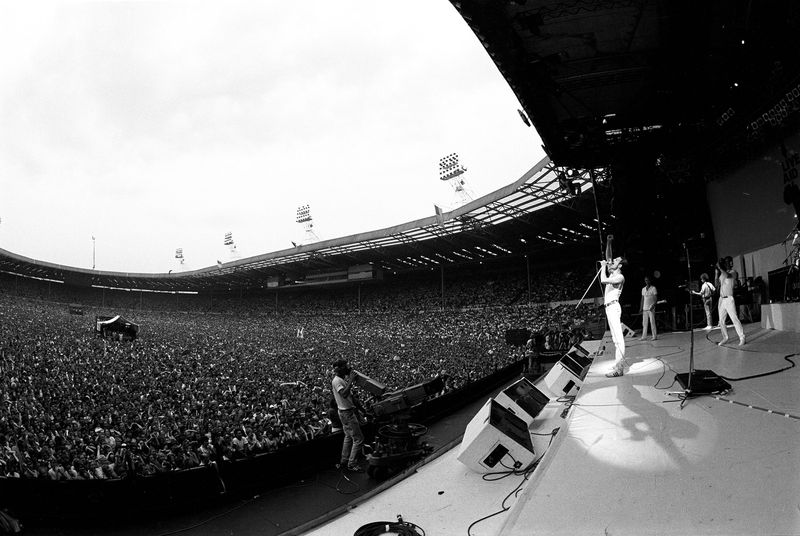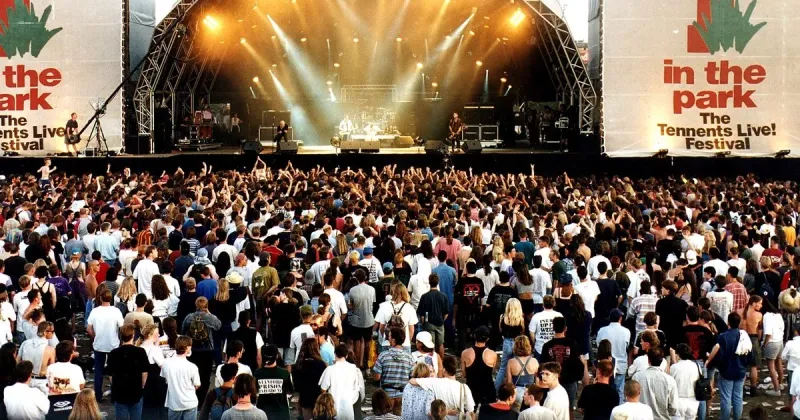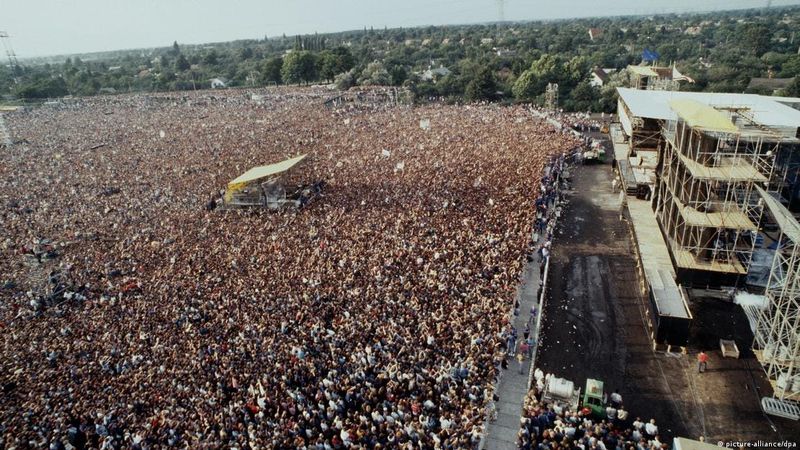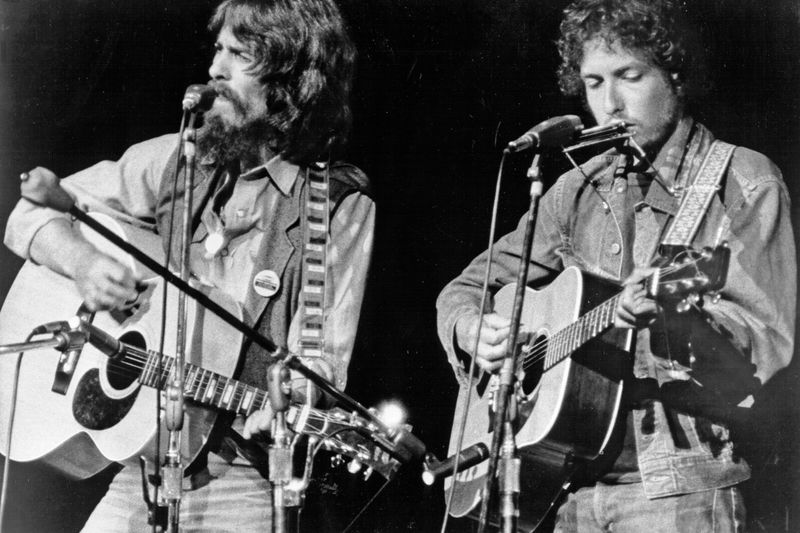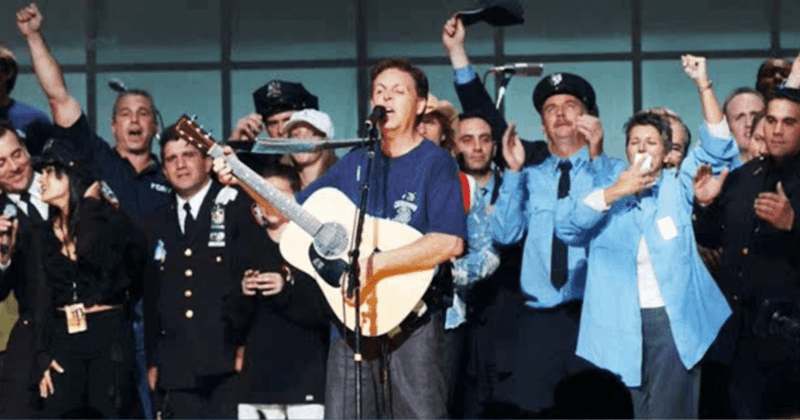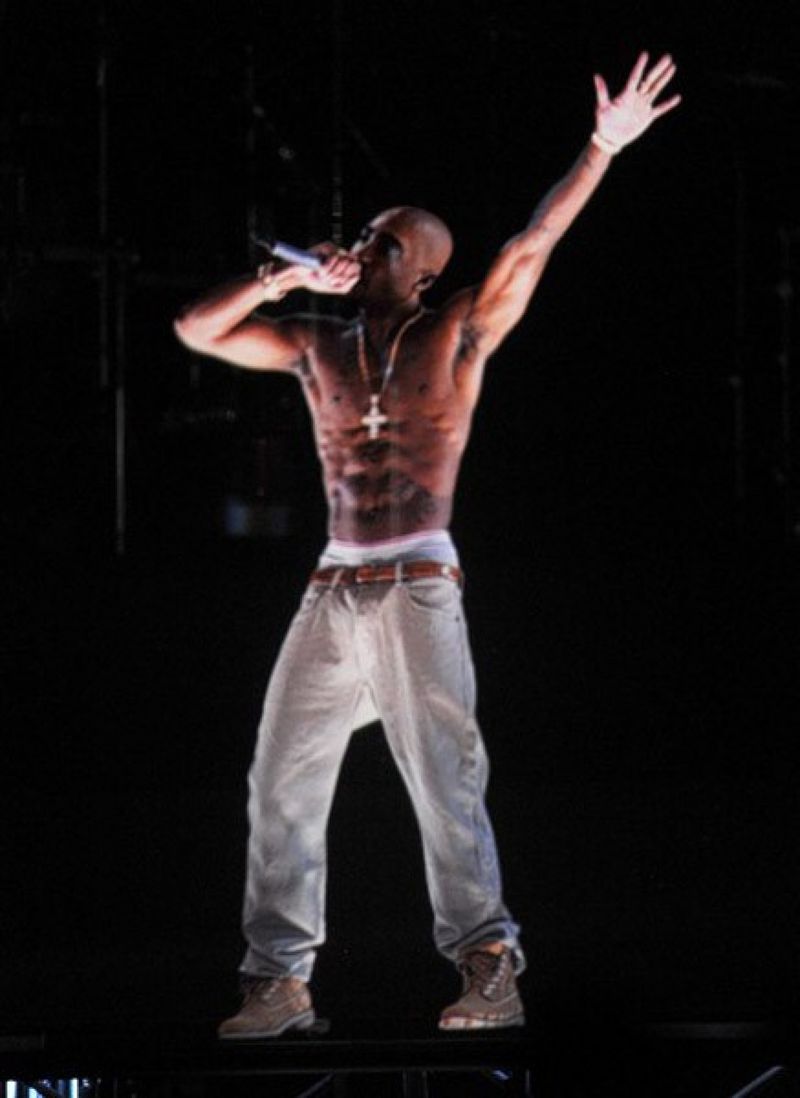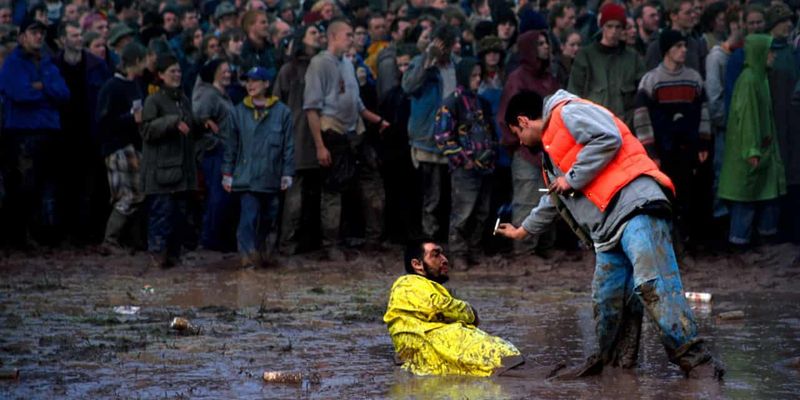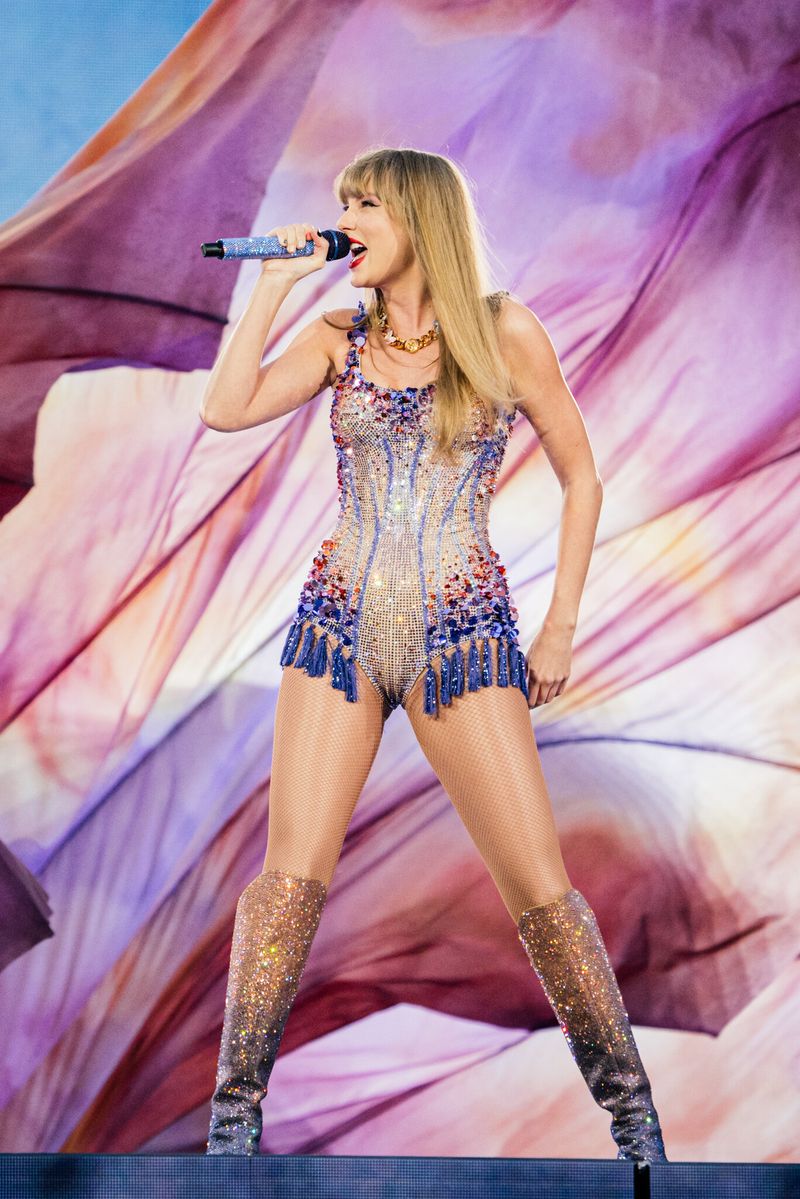Explore 23 legendary concerts that drew monumental crowds, creating unforgettable moments in music history. Each event captivated audiences with unique experiences and enormous attendance, etching their names into the annals of time.
1. Woodstock (1969) – Bethel, New York
A defining moment of the 1960s counterculture, Woodstock 1969 attracted over 400,000 attendees to a dairy farm in Bethel, New York. This festival became legendary for its unexpected performances by icons like Jimi Hendrix, The Who, and Janis Joplin. Spanning four days, it embodied the era’s spirit of peace and music, becoming a symbol of the anti-establishment movement. Despite logistical challenges, Woodstock is remembered for its massive crowd and its role in shaping music festivals’ future. The festival’s legacy continues to influence music and culture today, representing a pivotal moment in history.
2. Rod Stewart – Copacabana Beach (1994) – Rio de Janeiro, Brazil
On New Year’s Eve 1994, Rod Stewart performed at Rio’s Copacabana Beach, attracting between 3.5 to 4.2 million people. This concert holds the record as the largest free concert ever, stretching along the iconic 2.5-mile beach. Stewart’s performance, amidst fireworks and celebrations, symbolized unity and joy. The spectacle not only showcased Stewart’s popularity but also highlighted Rio’s passion for music and festivity. The event left a lasting impression on music history, marking a milestone in free concert attendance and setting a high bar for future performances.
3. Jean-Michel Jarre – Moscow (1997) – Russia
Jean-Michel Jarre’s 1997 concert in Moscow celebrated the city’s 850th anniversary, drawing an estimated 3.5 million attendees. The electronic music maestro transformed the cityscape with an awe-inspiring laser and fireworks show. This event was not only a celebration of music but also a testament to Moscow’s cultural renaissance post-Soviet Union. Jarre’s innovative showmanship captivated audiences, blending technology with art. The concert’s staggering attendance set a new benchmark for live performances, making it one of the largest concerts by a single artist in history.
4. Garth Brooks – Central Park (1997) – New York City
In August 1997, Garth Brooks made history with a Central Park concert attended by up to a million people, making it the largest country music concert ever. Broadcast live on HBO, Brooks delivered an electrifying performance, bridging country and mainstream music. His charismatic stage presence and hit songs resonated with fans, creating a memorable New York City summer night. The event underscored country music’s broad appeal and solidified Brooks’ status as a global superstar. This iconic concert remains a defining moment in both Brooks’ career and Central Park’s storied concert history.
5. Monsters of Rock (1991) – Moscow, Russia
In 1991, a sea of 1.6 million rock enthusiasts gathered in Moscow for the Monsters of Rock festival, marking a new era post-USSR. With legendary bands like AC/DC, Metallica, and Pantera headlining, the event became a symbol of newfound freedom and cultural exchange. The electric atmosphere resonated through the stadium as fans revelled in heavy metal’s pulsating beats. This monumental occasion illustrated rock music’s power to transcend borders and unite people. It remains etched in history as one of the largest gatherings of rock fans in Soviet and Russian history.
6. Summer Jam at Watkins Glen (1973) – New York
The Summer Jam at Watkins Glen in 1973 drew an unexpected 600,000 music fans, eclipsing Woodstock’s attendance. Featuring The Grateful Dead, The Band, and The Allman Brothers, it provided an unparalleled musical experience. Though less publicized than Woodstock, it showcased the era’s rock legends. Concertgoers braved logistical challenges to witness this historic gathering of talent. The event is celebrated for its massive turnout and remains a benchmark for outdoor music festivals. It highlighted the allure of live music and the sense of community among fans.
7. Rolling Stones – Copacabana Beach (2006) – Rio de Janeiro, Brazil
In 2006, the Rolling Stones delivered an unforgettable free concert at Rio’s Copacabana Beach, attracting an astounding 1.5 million fans. Mick Jagger’s charismatic performance turned the beach into a sea of dancing fans. This event demonstrated the timeless appeal of the Rolling Stones and their ability to draw massive crowds. The concert, set against Rio’s stunning backdrop, became a cultural phenomenon, capturing the essence of rock and roll. It remains one of the largest concerts ever, solidifying the band’s legendary status worldwide.
8. Steve Wozniak’s US Festival (1983) – California
In 1983, Steve Wozniak, Apple co-founder, hosted the US Festival in California, drawing 670,000 attendees over three days. Featuring acts like The Clash, Van Halen, and David Bowie, the event celebrated technology and music. Wozniak’s vision aimed to create a cultural meeting ground for the tech and music communities. Despite financial losses, the festival’s unique concept and eclectic lineup left a lasting impact. It fostered connections between artists and audiences, paving the way for future music festivals that blended technology with entertainment.
9. Simon & Garfunkel – Central Park (1981) – New York City
In September 1981, Simon & Garfunkel reunited in Central Park, performing to half a million fans. This free concert marked their first performance together in over a decade, rekindling the duo’s musical magic. The event was recorded and released as a live album, preserving the concert’s nostalgic ambiance. The harmonious blend of folk tunes and New York City’s iconic park setting created a memorable experience. This concert remains a poignant reminder of Simon & Garfunkel’s enduring influence on music and their ability to captivate audiences with their timeless sound.
10. Isle of Wight Festival (1970) – UK
The Isle of Wight Festival in 1970 witnessed Jimi Hendrix’s last UK performance before his tragic death. It attracted between 600,000 to 700,000 attendees, making it one of the largest festivals of the era. Despite logistical issues, the festival showcased a legendary lineup, including The Who and The Doors. Hendrix’s performance remains a haunting finale to his UK appearances, mesmerizing fans with his electric prowess. The festival’s sheer scale and legendary performances solidified its place in rock history, echoing the counterculture’s spirit and music’s transformative power.
11. Pink Floyd – Venice (1989) – Italy
In 1989, Pink Floyd staged a unique concert in Venice, with a floating stage on the city’s canals. Attracting over 200,000 fans on boats and along the waterways, the event caused sound complaints from miles away. This innovative concept captivated audiences, merging music with Venice’s breathtaking scenery. The concert highlighted Pink Floyd’s creative genius, blending visual spectacle with immersive soundscapes. It remains an iconic moment in music history, showcasing the band’s ability to push artistic boundaries and engage audiences in extraordinary ways.
12. Rock in Rio (1985) – Brazil
Rock in Rio 1985 marked a monumental moment in music history, attracting 1.4 million attendees over ten days. The festival’s highlight was Queen’s legendary performance, especially the unforgettable “Love of My Life” singalong. This event set a new standard for music festivals, combining international acts with passionate audiences. Rock in Rio became a cultural phenomenon, showcasing Brazil’s love for music and live performances. It established Brazil as a key player in the global music festival scene and inspired future iterations of the festival worldwide.
13. Paul McCartney – Red Square (2003) – Moscow, Russia
In 2003, Paul McCartney performed in Moscow’s historic Red Square, attracting 500,000 fans. As the first major Western rock concert in this iconic location, it marked a significant cultural milestone. McCartney’s performance, filled with Beatles classics, resonated deeply with the Russian audience. The event symbolized a bridge between East and West, celebrating music’s unifying power. McCartney’s presence in Red Square highlighted the enduring legacy of The Beatles and their global influence. This concert remains a cherished memory for fans and a testament to music’s ability to transcend cultural barriers.
14. Led Zeppelin – Tampa (1973) – Florida
In 1973, Led Zeppelin’s Tampa concert set the record for the loudest performance ever, measuring 130 decibels, akin to a jet engine’s roar. With over 56,800 attendees, the concert felt much larger due to its intensity and sound. This event became legendary for its sheer volume and energy, leaving a lasting impression on rock history. Zeppelin’s dynamic performance captivated fans, showcasing their musical prowess and stage presence. The concert highlighted the band’s influence in the rock genre, marking a high point in their illustrious career and music history.
15. Live Aid (1985) – Philadelphia & London
Live Aid 1985 brought the world together in a dual-venue concert held simultaneously in Philadelphia and London. With 172,000 in-person attendees and a global television audience of 1.9 billion, it was a groundbreaking event. Queen’s 20-minute set stole the show, becoming the gold standard for live performances. Organized to raise funds for Ethiopian famine relief, Live Aid demonstrated music’s power to inspire change. It remains one of the most significant concerts in history, illustrating the profound impact of collective action through music.
16. T in the Park (1994) – Scotland
T in the Park launched in 1994, evolving into Scotland’s premier music festival. Initially drawing 17,000 attendees, it skyrocketed to over 250,000 by 2007. Known for hosting iconic performances, Oasis’ 1996 gig became legendary. The festival’s growth reflected Scotland’s burgeoning music scene and its cultural significance. T in the Park fostered an eclectic mix of genres, attracting diverse audiences. It highlighted the importance of live music in Scotland, becoming a beloved tradition. The festival’s legacy continues to influence the music landscape, showcasing Scotland as a vibrant cultural hub.
17. Springsteen in East Berlin (1988) – Germany
In 1988, Bruce Springsteen played an unprecedented concert in East Berlin, drawing 300,000 people. This performance held deep significance, occurring behind the Iron Curtain where Western rock was rare. Springsteen’s message of hope and freedom resonated strongly with the audience, delivering an emotional and powerful show. The concert symbolized solidarity and the desire for change, contributing to the cultural shifts leading to the fall of the Berlin Wall. It remains a pivotal moment in music and political history, illustrating rock’s role in inspiring social transformation.
18. George Harrison – Bangladesh Benefit (1971) – NYC
The 1971 Bangladesh Benefit Concert, organized by George Harrison, drew 40,000 attendees but had a global impact. Held at Madison Square Garden, it was the first major charity concert, setting a precedent for future events like Live Aid. Harrison’s efforts raised awareness and funds for Bangladesh, showcasing music’s potential to drive humanitarian efforts. The concert featured performances by iconic artists, emphasizing the power of collective action. It remains a landmark in music history, illustrating the transformative impact of artists using their platform for philanthropy and global awareness.
19. Elvis in Hawaii (1973) – Aloha from Hawaii
In 1973, Elvis Presley’s “Aloha from Hawaii” concert became the first global live broadcast via satellite, reaching an audience of over 1 billion. With only 6,000 in attendance, its global impact was unparalleled. The concert showcased Elvis’s enduring appeal and technological innovation in broadcasting. Set against Hawaii’s exotic backdrop, it featured Presley at his charismatic best. This event highlighted his influence on music and pop culture, setting a new standard for live performances. The concert remains a significant milestone in media and music history, celebrating Elvis’s legacy.
20. The Concert for New York City (2001)
Held in October 2001, The Concert for New York City honored first responders and families affected by the 9/11 attacks. With 20,000 attendees, the event featured performances by icons like Paul McCartney, The Who, and David Bowie. The concert provided solace and unity, celebrating resilience in the face of tragedy. It became a powerful tribute, illustrating music’s role in healing and bringing communities together. The event raised substantial funds for relief efforts, cementing its place in history as a poignant reminder of music’s unifying power during times of crisis.
21. Coachella (2012) – Tupac Hologram
Coachella 2012 saw a groundbreaking moment with the first full hologram performance of a deceased artist. Tupac Shakur’s digital resurrection captivated the audience, blending technology with live music. The hologram’s realism amazed attendees, sparking debates about its implications for the music industry. This innovative performance marked a turning point in live entertainment, showcasing Coachella’s commitment to pushing artistic boundaries. It highlighted the festival’s role as a leader in music and technology integration, leaving a lasting impression on both fans and the industry.
22. Glastonbury (1994) – The Rain Year
Glastonbury 1994, known as “The Rain Year,” was notorious for its muddy conditions and chaotic atmosphere. Despite the challenges, it attracted an unofficial 300,000 attendees, many of whom crashed the event. The festival’s resilience in adverse weather became legendary, showcasing the indomitable spirit of music fans. Iconic performances amidst the mud further cemented Glastonbury’s status as a premier music festival. The rain-soaked event symbolized the unpredictable nature of live music and the communal experience that defines festival culture. It remains a memorable chapter in Glastonbury’s history.
23. Taylor Swift – Eras Tour (2023) – Multiple Cities
Taylor Swift’s 2023 Eras Tour made history as the first billion-dollar tour, drawing over 3.5 million fans worldwide. Each show delivered a unique experience, blending Swift’s diverse musical eras with stunning visuals. The tour’s seismic impact, both literally and figuratively, underscored Swift’s influence in the music industry. Fans across multiple cities experienced unforgettable performances, celebrating Swift’s artistic evolution. The tour highlighted her ability to connect with audiences on a massive scale, setting new records and solidifying her status as a global music icon.
